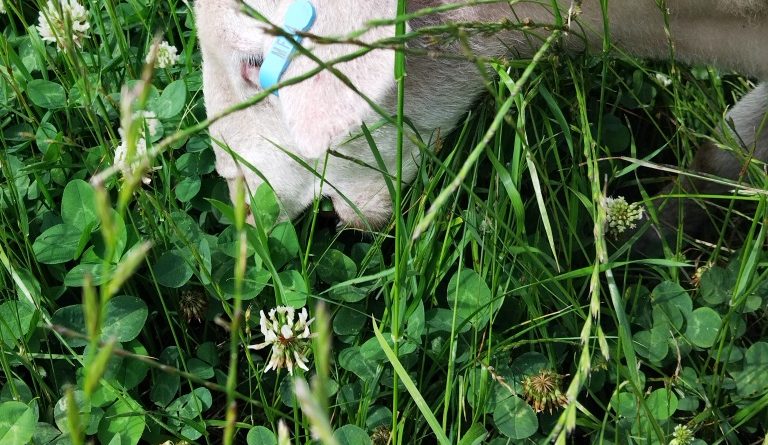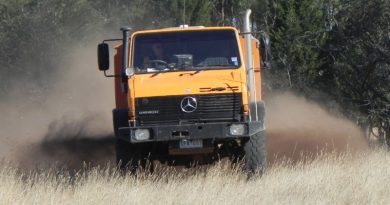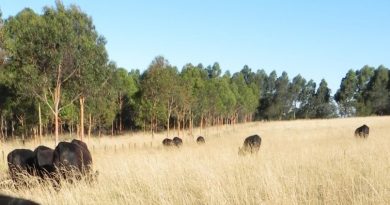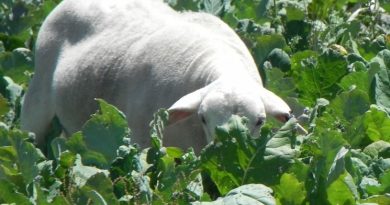How a five year old clover herb pasture impacts lamb growth
By Patrick Francis
Research data on lamb finishing pastures older than three years is rare but a New Zealand Grassland Association published paper has provided a detailed insight into lamb performance on two different five year old pastures. The 2023 published Tom Maxwell et al paper “ Five-year old, diversified pasture supports greater lamb live weight gain than a standard perennial ryegrass-white clover pasture” is particularly interesting not just for how lamb performance compares on two types of pastures but also for the Coopworth lamb growth rates month by month from tailing (marking) to slaughter weight around 50kg.
The pasture species involved are similar to what many prime lamb farmers sow in moderate to higher rainfall districts across southern Australia.
On Moffitts Farm we are regularly weighing our Wiltipoll lambs starting with birth weight, lamb marking weight, weaning weight and post-weaning weights out of interest as well as to meet data requirements of Lambplan genetic evaluation. In 2017 we also embarked on a lamb finishing pasture renovation program to include a diversity of perennial clovers (red and white), herbs (chicory and plantain then just chicory) and perennial ryegrass. Such high digestibility, high palatability and summer active pastures are becoming more common as the red meat industry strives for lower greenhouse gas emissions particularly methane and nitrous oxide to meet the objective of carbon neutral 2030 policy.
These pastures can dramatically improve lamb growth rates so that methane emissions per kg of carcase are lower, remove the need to apply nitrogen fertiliser replacing it with biological nitrogen fixation that supports chicory and grass growth, while at the same time help improve soil health particularly soil structure through increased labile carbon deposition. They are also being recognised for improving insect populations particularly honey bees which have an important role in plant pollination and biodiversity.
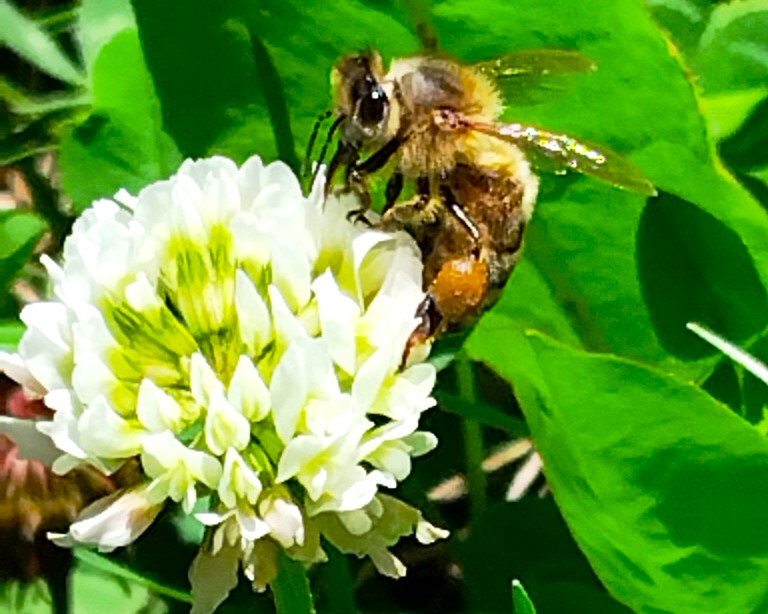
Figure: While white clover has important livestock production and methane reducing benefits it is also supporting an insect pollination ecosystem service and honey production. Photo: Patrick Francis.
While we have data on our Wiltipoll lamb growth performance there is very little detailed data available on other prime lamb breeds lamb performance across Southern Australia. Sources of lamb farmer case studies reported on by MLA or Soils for Life (a regenerative agriculture orientated group) rarely if ever quote growth rates and even research and demonstrations often only provide limited data over the life of the trial, not the life of the lambs and the pastures they grew on. So the Maxwell research is a rare insight into lamb growth performance on pastures which are increasingly important to lower red meat greenhouse gas emissions.
It is interesting how Maxwell differentiates a ‘diversified’ pasture from a standard perennial ryegrass-white clover pasture. On Moffitts Farm definition the so called ‘diversified’ pasture has insufficient sown species to be regarded as diversified. Our diversified finishing pasture has nine sown species – 5 white and red perennial clovers, two sub-clovers, chicory and perennial ryegrass. The NZ trial diversified pastures involved just three species – Italian ryegrass, Tonic plantain and red clover. Our standard perennial grass dominant pastures are also diversified containing seven grass species and three sub clovers. The NZ trial standard pasture had just two species sown perennial ryegrass and white clover.
Both NZ trial treatment blocks also had a moderate amount of self-established annuals and perennials which grew over the five years post the glyphosate spray, roto-cultivation and broadcast sowing, figure 1. That’s the same on Moffitts Farm paddocks where every effort is made to remove some unwanted perennials and annuals like Bent grass, Sweet Vernal grass, Yorkshire Fog grass, Rough Dogs Tail grass, and Silver grass.
These all have low palatability, low digestibility, and low production (including being mostly summer dormant except in exceptionally wet summers like 2023/24) compared to our sown species and gradually outcompete desired species unless additional management strategies to contain them are put in place. They can become a significant proportion of the total herbage mass if their removal is not close to 100% at sowing. How to achieve such a result while direct drill sowing is an on-going trial and error process (visit Lambs, pastures, wildlife a 2023 spring bonanza – Moffitts Farm for our latest approach).
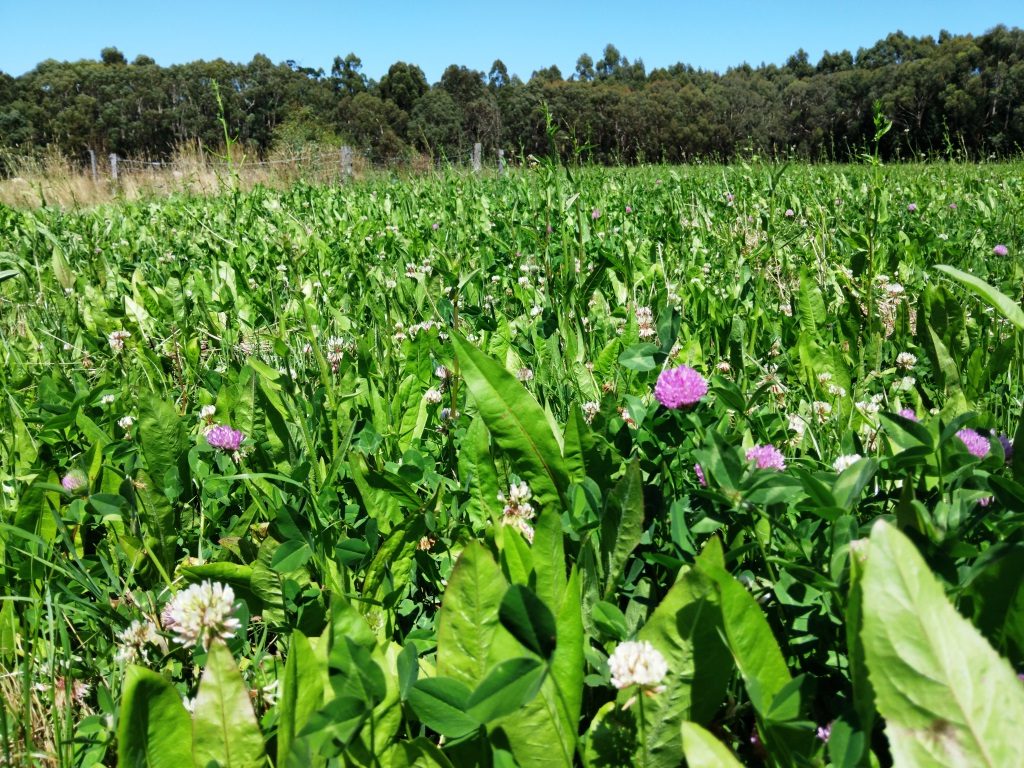
Figure: Research data clearly shows that to maintain pastures with moderate to high white clover content (around 50% over spring , summer and autumn) attention must be paid to the height pastures are grazed down to, the grazing interval (rest) and keeping sown and volunteer grass species in check throughout the year while supporting herbage productivity. Photo: Patrick Francis Moffitts Farm January 2024
European white clover grazing management research shows that uncontrolled grasses are detrimental to white clover productivity and persistence. Unless grasses which are usually co-sown perennial ryegrass and/or unwanted volunteer species like bent grass and Yorkshire Fog grass, are grazed low (less than 6m) and frequently in a rotation (21 to 42 days) over spring and summer the perennial clovers gradually decline in pasture as the grasses take over, Figure 1.
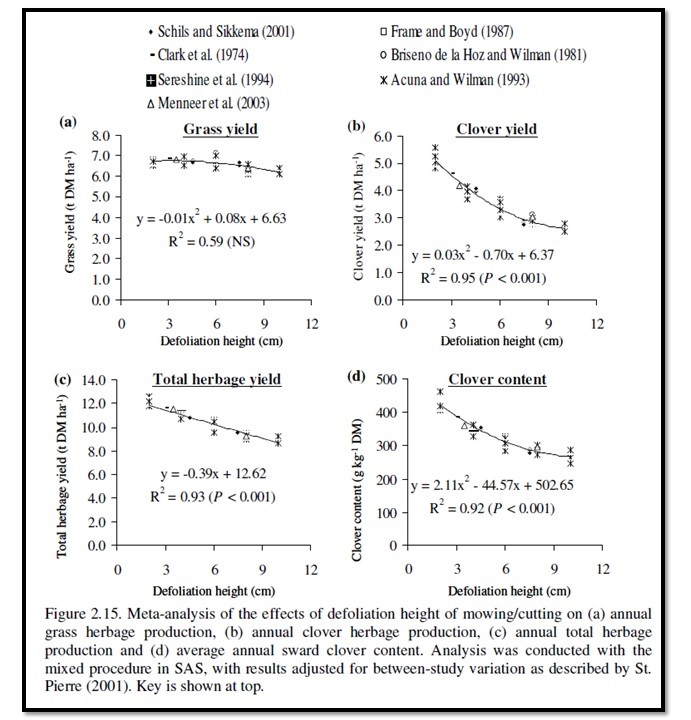
Figure 1: European white clover pasture grazing/cutting research highlights the importance of keeping grass species under control to allow the clovers to maintain a significant percentage of total herbage in a mixed pasture. Source: “Aspects of grazing management to improve productivity and persistence of white clover in Irish grassland”. PhD Thesis 2013 By Paul Phelan, Animal and Grassland Research and Innovation Centre, Cork, Ireland.
The seasonal impact of grazing/cutting height and defoliation interval clearly shows why mid-spring through to mid-autumn rotational grazing a white clover perennial grass pasture control its height and rest interval to around 42 days is the best strategy for clover persistence, Figure 2.

Figure 2: Seasonal impacts of grazing/cutting height and rest intervals for white clover perennial grass swards in Ireland. Source: “Aspects of grazing management to improve productivity and persistence of white clover in Irish grassland”. PhD Thesis 2013 by Paul Phelan, Animal and Grassland Research and Innovation Centre, Cork, Ireland.
The reason for the results in Figures 1 and 2 seems to be related closely to white clover leaf sunlight interception and the negative impact of shading by grass leaves. Too thick grass also prevents white clover plants from spreading and producing more stems (stolons) and new leaves.
In the Maxwell et al trial the amount of white clover in the pasture mix at year five suggests that it has been negatively impacted by other grasses since establishment, figure 3. The clover percentage drops dramatically in both the Diverse and Simple pasture plots into summer and autumn as perennial ryegrass, other grasses and dead herbage dominate. It the opposite of what is shown happening in Figure 2.
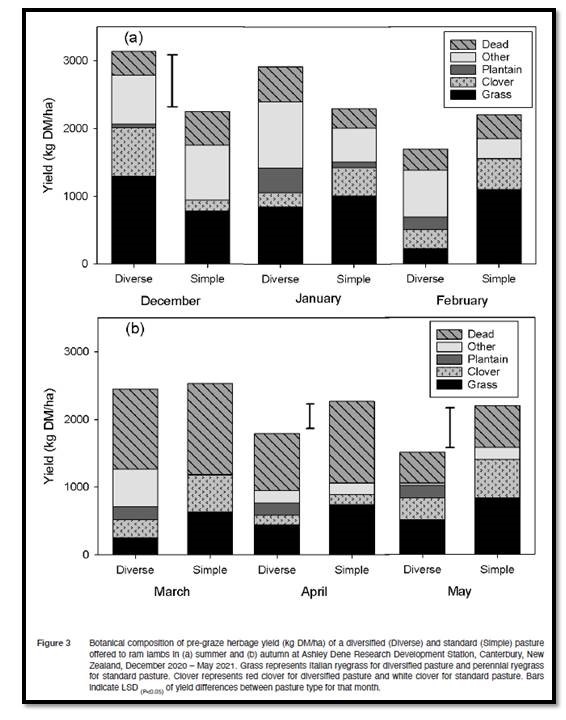
Figure 3: Species other than those sown have become a significant part of the pasture composition. Source: Maxwell et al 2023.
The impact of the unwanted species on the lambs performance over the 12 month pasture growth cycle is a major unknown in pasture trials and looks to be critically important in the Maxwell trial pastures. Over summer the volunteer species provide 20 – 30 % of the pasture mass on offer and in autumn it is likely they contribute significantly to the dead pasture mass on offer as some of them are annual species which die out in late spring. Over the same months the clover percentage is low (around 20% in December Diversified pasture) to extremely low around 5% in both pasture regimes later in summer.
Given lambs optimum pasture intake is determined by clover percentage in legume/grass pasture mixes and peaks around 70% clover the data presented is not particularly helpful to understand the significant difference in pre-weaning lamb growth and the average weaning weights in both treatments. The Diversified pasture lambs weighed 4.5kg heavier at weaning in the first week of December, table 1. That weight also coincides with a much higher Diversified pasture clover percentage as well as higher ryegrass percentage in December. After December the clover and perennial ryegrass percentage dropped in the Diversified pasture and increased in the Simple pasture.
The Feed Conversion Efficiency data reflects the change in pasture composition or possibly species palatability over summer and autumn. Table 1 shows the FCE dropped dramatically in the Diversified pasture lambs in autumn compared to the Standard pasture lambs. The % variation in clover and ryegrass does not seem large enough to account for the higher Standard pasture autumn FCE performance.
The FCE results don’t seem to match the live weight gain performance. In summer the Diversified pasture lambs had a higher FCE over the three months 95.6 versus 73.5 for the Standard pasture yet the live weight gains from weaning to end of February were 6kg and 12kg respectively. This does not add up?
In autumn the Diversified pasture lambs FCE efficiency was 33.7 versus 71 for the Standard pasture lambs and respective live weight gains were 6kg and 10kg which makes sense!
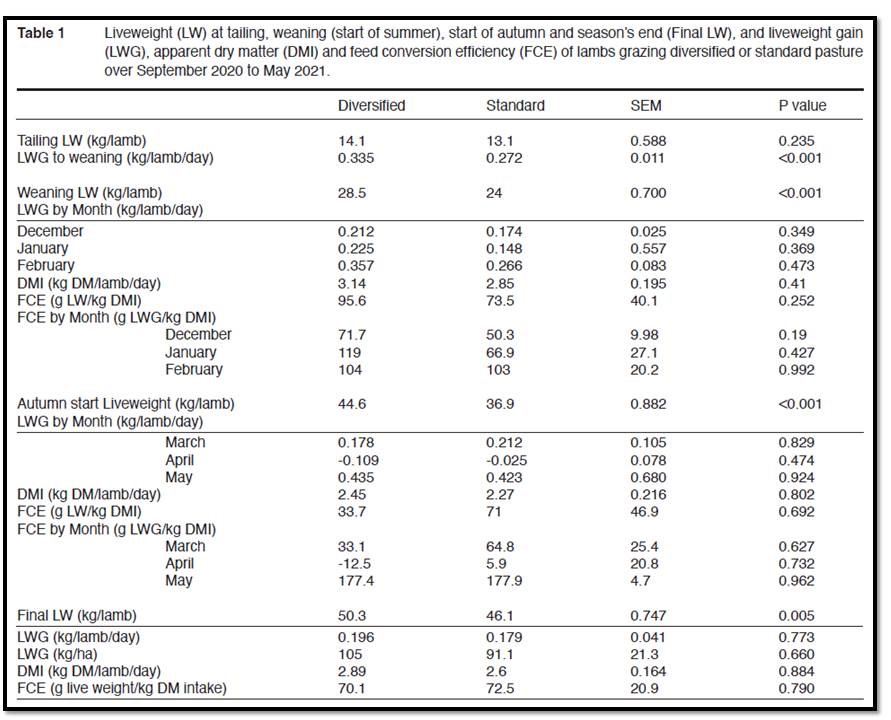
Table 1: Diversified and Standard pastures lamb growth rates, dry matter intakes and feed conversion efficiency for summer and autumn months. Source: Maxwell et al 2023
The results in Table 1 while interesting fail to give an insight into why the Diversified pasture lambs weaned 4.5kg heavier than the Standard pasture lambs. Given the authors have not provided pasture composition percentages in Spring it is impossible to know whether or not the spring pasture composition was likely to have been responsible.
A clue comes from the December pasture compositions which show the Diversified pasture having a considerably higher clover and ryegrass percentage than the Standard pasture figure 1. If this was the case in Spring the Diversified pasture ewes are likely have produced more milk and the lambs eaten a more digestible feed giving them a growth rate advantage hence the higher weaning weight.
The most interesting data from Table 1 is the final live weight difference between the Diversified and Standard pasture lambs at market weight in May. The difference is 4.2kg about what is was at weaning on 1 December, six months earlier. In other words the variations in pasture composition and lamb monthly growth rates have been minimal.
Over the six months there is a major reversal in lamb growth rates between the two pastures. In summer the Diversified pasture lambs grow best and have an 8kg higher average weight at start of autumn. At that point the growth performance reverses and the Standard pasture lambs grow faster and by the end of May they have gained 4kg on the Diversified pasture lambs and are back to the 4kg difference at weaning on 1 December. Figure 3 shows that the Simple pasture composition is improving in terms of the percentage of clover and ryegrass present compared to the Diversified pasture and this may have been responsible for the higher growth rates achieved.
The unanswered question with this trial is how large were the pasture composition differences between the Diversified and Standard pastures between marking and weaning to give such a large difference in weights on 1 December?
Another interesting result is how fast lambs on both pastures grew in May, both in excess of 400grams per day. That happened after both groups lost weight in April, the Diversified pasture lambs at over 100g/d and the Simple pasture lambs at 25g/d. Was the May growth rate turn around an example of compensatory growth impact once pasture nutrition had improved?
Take home message
My take home message from this trial relates to the possibilities of managing clover/herb/ryegrass diversified pastures on a yearly basis to achieve the Coopworths genetic growth rate potential. The data shows the Coopworths can grow above 300g/d with the right pasture, but they average less than 200g/d. If both pastures had been managed along the lines mentioned in the European/Irish research could the lambs have grown closer to their genetic potential and achieve an overall post weaning 300g/d growth rate.
The implications of this for the red meat industries greenhouse gas emissions are significant. The lambs would have finished in 3.5 months after weaning rather than 5 months, so their methane emissions per kg of carcase weight would be significantly reduced. As well, with the lambs off the property 1.5 months earlier the farmer has the opportunity to rest some pastures for longer for winter feed for pregnant ewes ensuring optimum conditions score at lambing possibly without the need for boosting winter pasture growth with nitrogen fertiliser or supplementary feeding in late winter early spring. The co-benefits of getting perennial clovers/herbs/perennial ryegrass pasture management right seem enormous for productivity and the environment.

